

- Le Passage to India
- Sunset clouds over the river Brahmaputra, in Guwahati, Assam, India


 The journey of a lifetime, every time
The journey of a lifetime, every time
news!

Feast your eyes upon the opulent yet elegant attire donned by the royals of a bygone era, who held everyone in their thrall. In fact, it’s like discovering the chronicles of a royal heritage, which has been handed down since generations. The dazzling jewelry and intricate patterns reflect an unfathomable degree of finest craftsmanship. Besides the aesthetic appeal, many of these royal attires have a fascinating history – quite a few of these historical anecdotes have a fairytale kind of charm and prove to be really thought provoking.
Some of these magnificent garments were even donned by famous royals, who have been immortalized in the pages of history. Small wonder that even today, there are many takers for such kind of regal garbs, especially during special occasions – thematic royal weddings and ceremonial functions. After all, this is one of the most memorable ways of playing an erstwhile Maharani (Queen), Rajkumari (Princess), or even a Maharaja (King).
Good to know
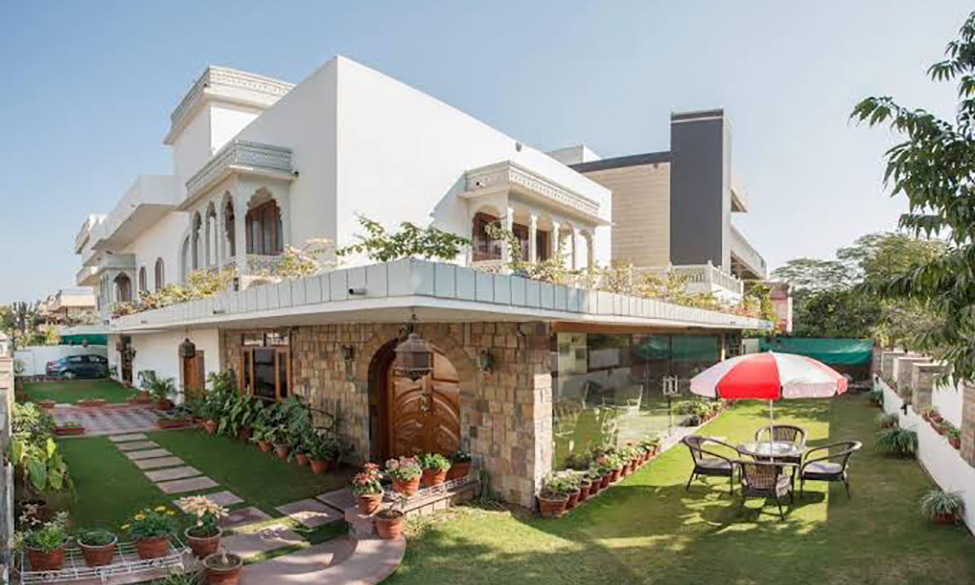
Camellia homestay has modern architecture and offers two luxury bedrooms with attached washrooms, and all the modern facilities for a comfortable stay. The guest will have access to most of the common areas of the property such as the dining and formal sitting rooms. For a drink or two, the magnificent Saddle Bar offers the perfect ambience.
The hosts have rich connections to the royal past and are decedents of chivalrous Rajput Nobel Clan of Jhalas - famous for saving Maharana Pratap in the battle of "Haldi Ghati" against the Mughals. They are well – travelled, knowledgeable couple who have tons of interesting regional recipes and local stories up their kitty. They spent 30 years around tea plantations in the Darjeeling and Dooars before settling down at their ancestral home at Civil Lines in Jaipur.
Possible Experiences
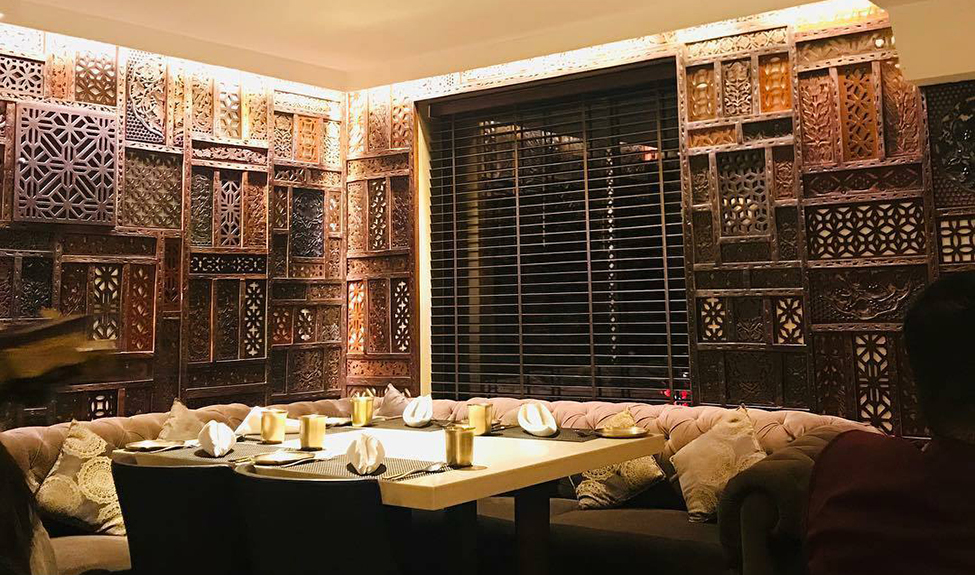
An array of perfectly blended spices remains one of the major hallmarks of Malabar’s delectable cuisine – after all, Kerala has long been known as the land of spices. The food bears distinctive elements of Malabar’s historical legacy deeply influenced by seafaring traders from distant lands. These include culinary influences of the Mughlai-Arab, Portuguese, British, Dutch, Jewish and French visitors. Many of the dishes are cooked in India’s clarified butter or rather ghee. Some of the most legendary preparations are pancakes and steamed rice cakes, biryani (rice-based dish), Kallummakkaya (oysters) curry and the muttamala snack, made of eggs to name a few.
To sample the exquisite flavours of Malabar and lot more in Delhi, Sana-di-ge near Malcha Market, Chanakyapuri, remains one of the best bets. Many of the recipes have been sourced from traditional households in the West coast of India. In simple words, these recipes have been handed down through generations and bring alive the magic of food lovingly prepared by a mother.
The chefs have been trained to master the art of using essential yet simple techniques to create that perfect taste. The elegant and relaxed indoor as well as rooftop seating arrangements offer the perfect ambience to relish their irresistible preparations. The elaborate food and bar menus offer a wide range of choice across vegetarian, non-vegetarian, gluten free, sugar free and quite a few other options.
Good to know

Celebrated by the Garo tribe, who are amongst the world’s last few remaining matrilineal societies, the Wangala festival is marked by two to seven days of festivities. Villagers send up prayers of thanks to the sun god during this post-harvest festival. The celebrations also showcase the unique cultural traditions of the Garos. Singing and dancing rituals have long remained an integral element of the festival. The villages seem to burst into a riot of colours and gaiety as Garo girls don vivaciously colourful costumes and dance to the beats of drums and bamboo flutes played by the Garo boys. Folk songs depict mundane yet enchanting aspects of Garo life, including human aspirations, romance, day-to-day struggles and nature’s beauty.
Villagers also set up stalls full of enticing local handicrafts offering remarkable collectibles for visitors. Usually, two or three villages band together at one place to host gala celebrations. It’s also an occasion to socialise and help younger Garos appreciate their ancient heritage and traditions. Wangala marks the end of a period of toil and the onset of winters –the echo of drumbeats across hills and valleys signals that it’s a time to make merry and relax.
Suggested Itinerary
Day 1 | Arrive in Guwahati. Overnight stay in Guwahati.
Day 2 | Proceed for sightseeing. Visit Kamakhya temple, Navagraha temple or the temple of nine planets, Umananda island temple on river Brahmaputra. Overnight in Guwahati.
Day 3 | Drive to Tura, the headquarters of the Western Garo Hills. Overnight in Tura.
Day 4-5 | After breakfast, proceed to witness the rituals and celebrations of the Wangala Festival. Interact with the locals, enjoy the regional dances and sample the cuisine.
Day 6 | Today, trek to the top of the Tura peak to enjoy a mesmerizing view of the Brahmaputra valley and the golden plains of Bangladesh. Proceed to visit the Pelga waterfalls. A typical traditional Garo bamboo bridge constructed over Ganol river is another added attraction.
Day 7 | After breakfast, drive to Shillong. Reach in the afternoon and check in your accommodation. This day is at leisure.
Day 8 | Today, proceed to explore the beautiful town of Shillong. Visit the famed Barapani or Umiam Lake, the Elephant Falls, the Shillong Peak, Lady Hydari Park, Wards Lake, Cathedral Catholic Church and the Golf course.
Day 9 | Drive from Shillong to Guwahati. Board your flight to your onward destination.
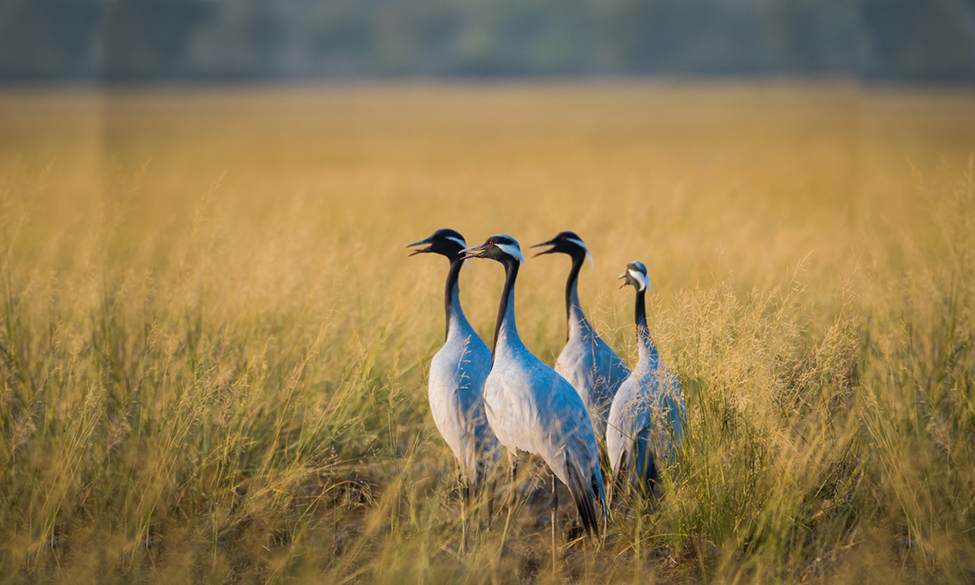
Loaded with the goodness of Vitamin C, the Amla (Indian Gooseberry) fruit is much sought-after during the winter months. Rich in anti-oxidants, Amla is also believed to be potent enough to fight the formation of cancer cells. Amla even has deep religious and cultural connections – in the Sanskrit Buddhist tradition, the great emperor Ashoka’s final gift to the Buddhist Sangha, was half an amalaka fruit.
Dried and fresh fruits of the plant are also used in traditional Indian medicine. In fact, all parts of the plant are used in various Ayurvedic medicine herbal preparations. Amla may be taken raw, in a juice form, as condiment, or can be simply enjoyed in homemade pickles. Any kitchen in every part of India will have generous number of interesting recipes of Indian gooseberries to share.
The Demoiselle Crane is a migratory species of crane found in central Eurasia, across the Black Sea to Mongolia and North Eastern China. There is a small breeding population in Turkey as well. From August to March, and especially during the winter months of November to February, these birds migrate to India in large numbers from Asia, Mongolia and China.
This is one of the toughest migratory journeys in the realm of wildlife. The cranes gather in flocks of up to 400 and reach altitudes of 16,000–26,000 feet during their flight to India. During the journey, the Demoiselle Cranes cross the great Himalayas to reach their Indian over-wintering grounds. Like other cranes, they fly with their head and neck straight forward and their feet and legs straight behind.
Watching huge flocks of these elegant cranes is a highly exhilarating experience and this spectacle can be witnessed in Khichan, a sleepy desert village in Jodhpur. The Demoiselle Crane has a delicate maiden-like appearance and was thus named so by Queen Marie Antoinette.
While these cranes used to visit the Khichan farmlands, their numbers increased dramatically since the 1970s. Interestingly, it all started when a resident of this village started feeding pigeons. Soon, squirrels, peacocks and other birds joined the pigeons. Over time, the demoiselle cranes also started visiting in larger and larger numbers. Now, thousands of them come in, year after year.
Trucks in India usually conjure images of smoke-belching monstrous vehicles muscling their way through traffic. Well, that is just one perspective. Trucks also have a fabulous arty side to them as many owners and truck drivers love to beautifully deck up their vehicles. In fact, there is a genre called Truck Art form, which manifests itself in myriad charming ways. Professional artists often paint trucks in different themes. From depicting religious or mythological events in bright colours to decorating trucks with lucky talismans such as stringing together lemon and green chillies or even hanging a pair of old shoes, people come up with many innovative ideas. Quirky little notes are also often boldly written on trucks. While it’s common to decorate trucks across the country, some of the most interesting truck art forms can be seen in Punjab and Udaipur. Especially in Punjab, generations of families have been in the business of painting trucks, or rather Truck Art.

Here is some good news from Northeast India. Sikkim is now all set to welcome back tourists as the state government has given its nod to allow homestays, hotels and other tourism services to resume operations from 10th October. In fact, free interstate movement of people will start right from 1st October, sans registration requirements. In a further development, free movement of vehicles will also be permitted with the neighbouring state of West Bengal from 1st October.
A Standard Operating Procedure (SOP) for hotels and the entire tourism sector may be released soon. Booking facilities for hotels and homestays will start from 27th September. Furthermore, the odd-even rule of restricting movement of public vehicles, as per the last digit of the vehicle's registration number, will be also lifted from 1st October. This restriction may continue for private vehicles.
International passengers arriving at DIAL will now get the facility of undergoing COVID-19 screening test right at the airport. This is the first-of-its-kind facility in India, and up to 2,500 samples can be tested in a day. While it's not mandatory for international travellers to opt for this test at the airport, the ones who test negative, will be required to undergo institutional quarantine. The results will be delivered within four to six hours. In fact, currently all international travellers arriving in Delhi, need to undergo institutional quarantine.
Besides, travellers carrying an RT-PCR (valid for reports up to 96 hours before the journey) negative report, are exempted from institutional quarantine and may proceed with their onwards journey. Travellers, flying with a connecting Vande Bharat flight, may undergo quarantine at their destinations.
Travellers without a COVID-19 negative certificate, may book a slot in advance and it's advisable to book the slot an hour before the time of arrival and around four to six hours before the departure flight.
This test will cost around INR 2400 (USD 32.60) and waiting charges at the lounge will be INR 2600 (USD 35.32). This will include the cost of meals, juice and water. Travellers may also opt for hotel facility. The tariff will vary from hotel to hotel.
Mumbai's Chhatrapati Shivaji Maharaj International Airport has introduced around 50 mobile-enabled kiosks, powered by SITA. This technology will give passengers the flexibility to avail check-in service with the help of their mobile devices at designated kiosks and largely eliminates the need to touch surfaces at the airport. It also ensures compliance with the Ministry of Civil Aviation's new passenger processing guidelines.
The service is cost effective as existing common-use kiosks will serve the purpose. Furthermore, airlines need not make any changes to their existing IATA CUSS standard check-in applications. The facility has been rolled out at Terminal 2 and passengers simply have to scan a QR code on their mobile phone or tablet. Thereafter, the mobile device will serve as a trackpad for controlling check-in and self-bag drop kiosk, as well as printing boarding passes and bag tags.
This new service will also be introduced at some of the other airports across the country.

Here is some good news from Northeast India. Sikkim is now all set to welcome back tourists as the state government has given its nod to allow homestays, hotels and other tourism services to resume operations from 10th October. In fact, free interstate movement of people will start right from 1st October, sans registration requirements. In a further development, free movement of vehicles will also be permitted with the neighbouring state of West Bengal from 1st October.
A Standard Operating Procedure (SOP) for hotels and the entire tourism sector may be released soon. Booking facilities for hotels and homestays will start from 27th September. Furthermore, the odd-even rule of restricting movement of public vehicles, as per the last digit of the vehicle's registration number, will be also lifted from 1st October. This restriction may continue for private vehicles.
International passengers arriving at DIAL will now get the facility of undergoing COVID-19 screening test right at the airport. This is the first-of-its-kind facility in India, and up to 2,500 samples can be tested in a day. While it's not mandatory for international travellers to opt for this test at the airport, the ones who test negative, will be required to undergo institutional quarantine. The results will be delivered within four to six hours. In fact, currently all international travellers arriving in Delhi, need to undergo institutional quarantine.
Besides, travellers carrying an RT-PCR (valid for reports up to 96 hours before the journey) negative report, are exempted from institutional quarantine and may proceed with their onwards journey. Travellers, flying with a connecting Vande Bharat flight, may undergo quarantine at their destinations.
Travellers without a COVID-19 negative certificate, may book a slot in advance and it's advisable to book the slot an hour before the time of arrival and around four to six hours before the departure flight.
This test will cost around INR 2400 (USD 32.60) and waiting charges at the lounge will be INR 2600 (USD 35.32). This will include the cost of meals, juice and water. Travellers may also opt for hotel facility. The tariff will vary from hotel to hotel.
Mumbai's Chhatrapati Shivaji Maharaj International Airport has introduced around 50 mobile-enabled kiosks, powered by SITA. This technology will give passengers the flexibility to avail check-in service with the help of their mobile devices at designated kiosks and largely eliminates the need to touch surfaces at the airport. It also ensures compliance with the Ministry of Civil Aviation's new passenger processing guidelines.
The service is cost effective as existing common-use kiosks will serve the purpose. Furthermore, airlines need not make any changes to their existing IATA CUSS standard check-in applications. The facility has been rolled out at Terminal 2 and passengers simply have to scan a QR code on their mobile phone or tablet. Thereafter, the mobile device will serve as a trackpad for controlling check-in and self-bag drop kiosk, as well as printing boarding passes and bag tags.
This new service will also be introduced at some of the other airports across the country.

Here is some good news from Northeast India. Sikkim is now all set to welcome back tourists as the state government has given its nod to allow homestays, hotels and other tourism services to resume operations from 10th October. In fact, free interstate movement of people will start right from 1st October, sans registration requirements. In a further development, free movement of vehicles will also be permitted with the neighbouring state of West Bengal from 1st October.
A Standard Operating Procedure (SOP) for hotels and the entire tourism sector may be released soon. Booking facilities for hotels and homestays will start from 27th September. Furthermore, the odd-even rule of restricting movement of public vehicles, as per the last digit of the vehicle's registration number, will be also lifted from 1st October. This restriction may continue for private vehicles.
International passengers arriving at DIAL will now get the facility of undergoing COVID-19 screening test right at the airport. This is the first-of-its-kind facility in India, and up to 2,500 samples can be tested in a day. While it's not mandatory for international travellers to opt for this test at the airport, the ones who test negative, will be required to undergo institutional quarantine. The results will be delivered within four to six hours. In fact, currently all international travellers arriving in Delhi, need to undergo institutional quarantine.
Besides, travellers carrying an RT-PCR (valid for reports up to 96 hours before the journey) negative report, are exempted from institutional quarantine and may proceed with their onwards journey. Travellers, flying with a connecting Vande Bharat flight, may undergo quarantine at their destinations.
Travellers without a COVID-19 negative certificate, may book a slot in advance and it's advisable to book the slot an hour before the time of arrival and around four to six hours before the departure flight.
This test will cost around INR 2400 (USD 32.60) and waiting charges at the lounge will be INR 2600 (USD 35.32). This will include the cost of meals, juice and water. Travellers may also opt for hotel facility. The tariff will vary from hotel to hotel.
Mumbai's Chhatrapati Shivaji Maharaj International Airport has introduced around 50 mobile-enabled kiosks, powered by SITA. This technology will give passengers the flexibility to avail check-in service with the help of their mobile devices at designated kiosks and largely eliminates the need to touch surfaces at the airport. It also ensures compliance with the Ministry of Civil Aviation's new passenger processing guidelines.
The service is cost effective as existing common-use kiosks will serve the purpose. Furthermore, airlines need not make any changes to their existing IATA CUSS standard check-in applications. The facility has been rolled out at Terminal 2 and passengers simply have to scan a QR code on their mobile phone or tablet. Thereafter, the mobile device will serve as a trackpad for controlling check-in and self-bag drop kiosk, as well as printing boarding passes and bag tags.
This new service will also be introduced at some of the other airports across the country.
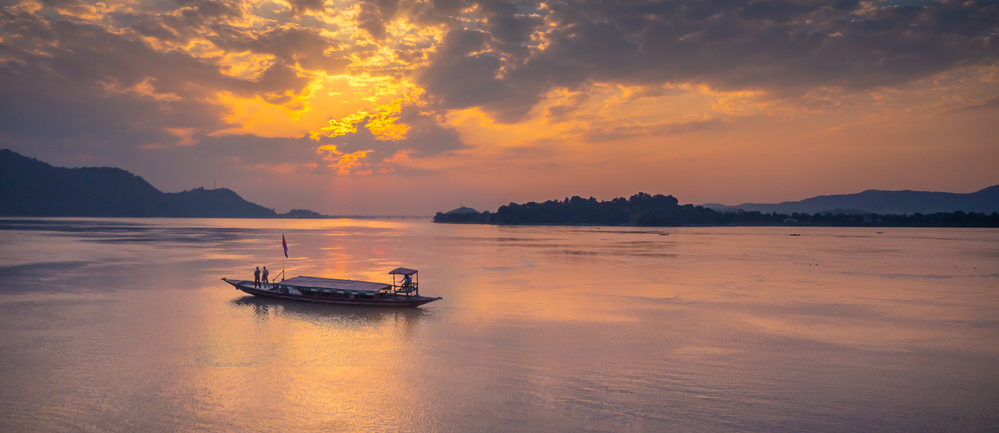
Dear Readers,
Greetings on the occasion of World Tourism Day and welcome to our newsletter. We have detailed some stimulating information and hope, you will enjoy this read. The section on 'Timeless Journeys' will take you on a sojourn to the bygone era of royals, while 'The Craft of Cuisine' sheds some light on India's delectable coastal cuisine. 'Hideaways' will tickle your fancy with our specially curated feature on accommodation.
Celebrating India treats you to some interesting trivia on a tribal festival. A World of Surprises has further delightful titbits of information.
Finally, check out featured news from the world of travel in On the Go section.
Happy reading!
Warm regards,

Amit Prasad
Chief Executive Officer,
Lepassage to India

Timeless Journey

Trace the illustrious heritage of Rajputana as you lose yourself in the opulent world of regal attires donned by the royalty of a bygone era.
Read More
Hideaway

Conveniently located in the poshest area in town, Camellia homestay is a peaceful retreat away from the crowded city. Yet, it lies within close vicinity to all the major must- visit places in Jaipur.
Read More
Craft of Cuisine

The very aroma of Malabar cuisine has an uncanny yet deeply gratifying way of urging in hunger pangs!
Read More
 Celebrating India
Celebrating India
Some parts of Northeast India, especially Meghalaya come alive with festive frenzy during Wangala or the Hundred Drums Festival.
Read MoreUnveil unique stories from distinct parts of mystic India. Explore how seasons impact our way of life; how eating habits change with the changing time of year; what customs and local traditions we follow at various ceremonies; what movies & books we like; and how nature is essential to our survival!!
Come, discover a fascinating world of tradition and history, myth and reality with us.
Read More News on the Go
News on the GoSikkim to Welcome Back Tourists from 10th October
Delhi International Airport Limited (DIAL) Starts COVID Testing Facility
Mumbai Airport Starts Touchless check-in Service
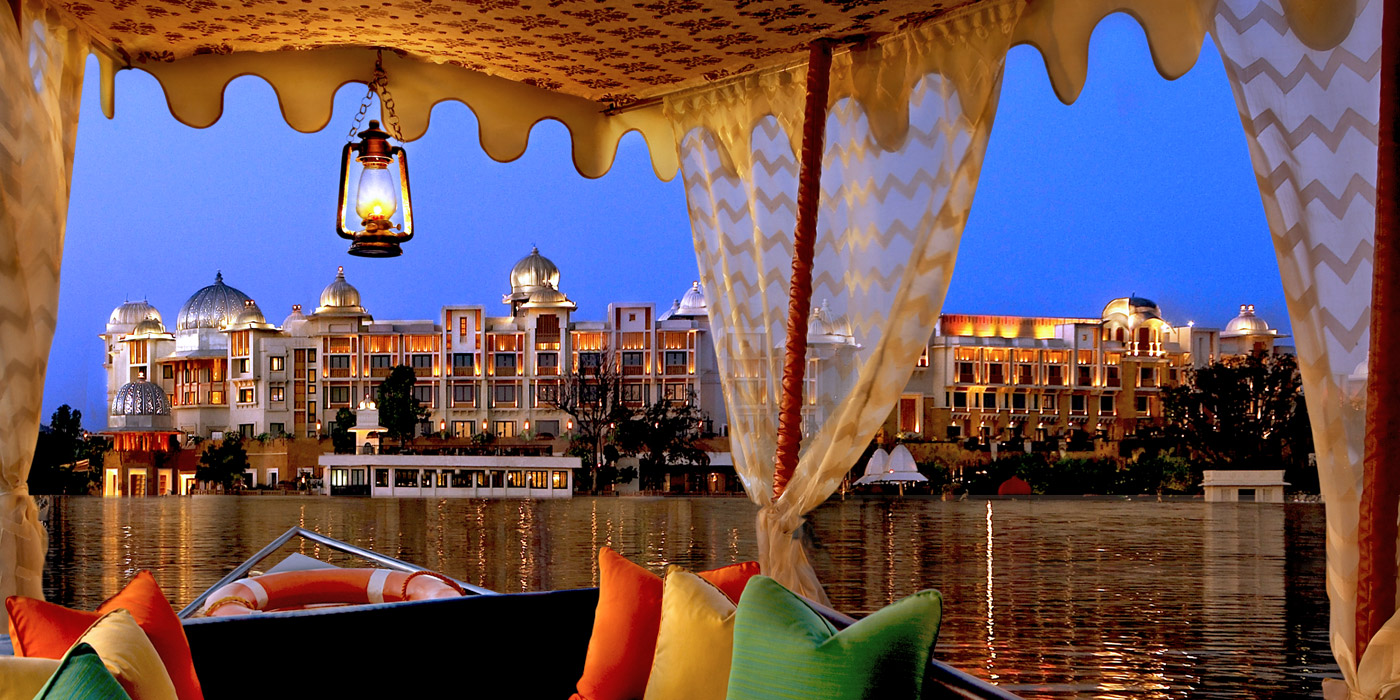

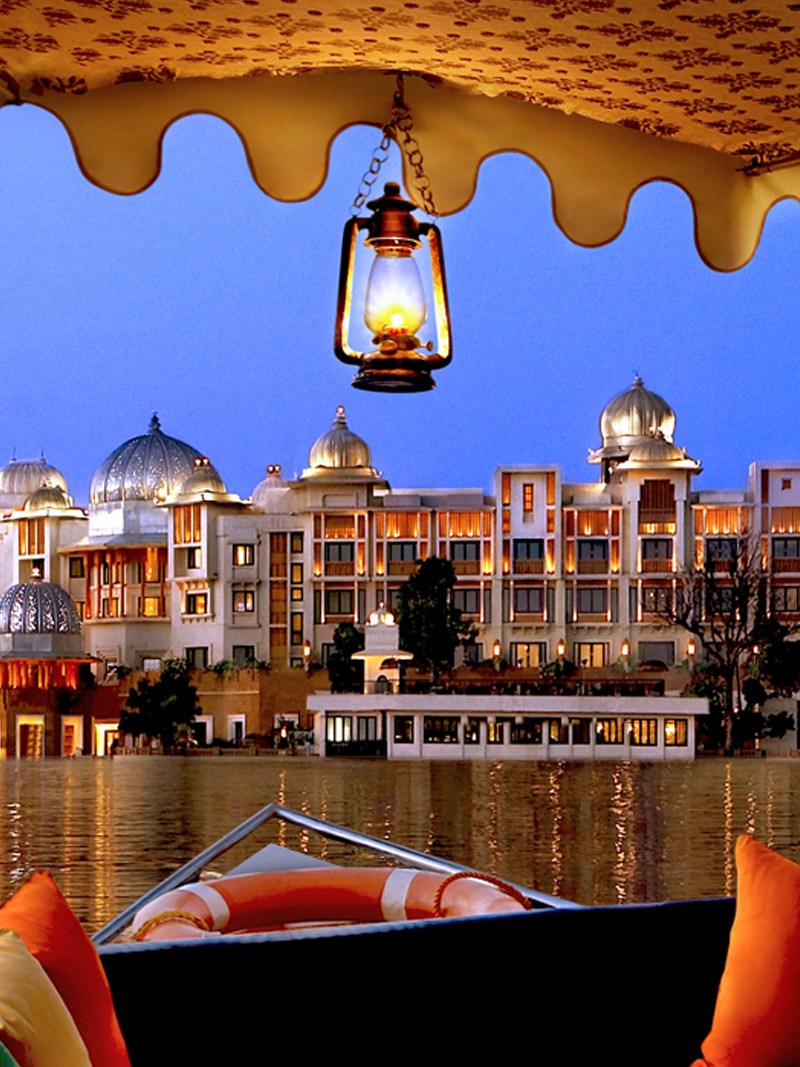
Sign up for travel updates, exclusive offers & inspiration!

